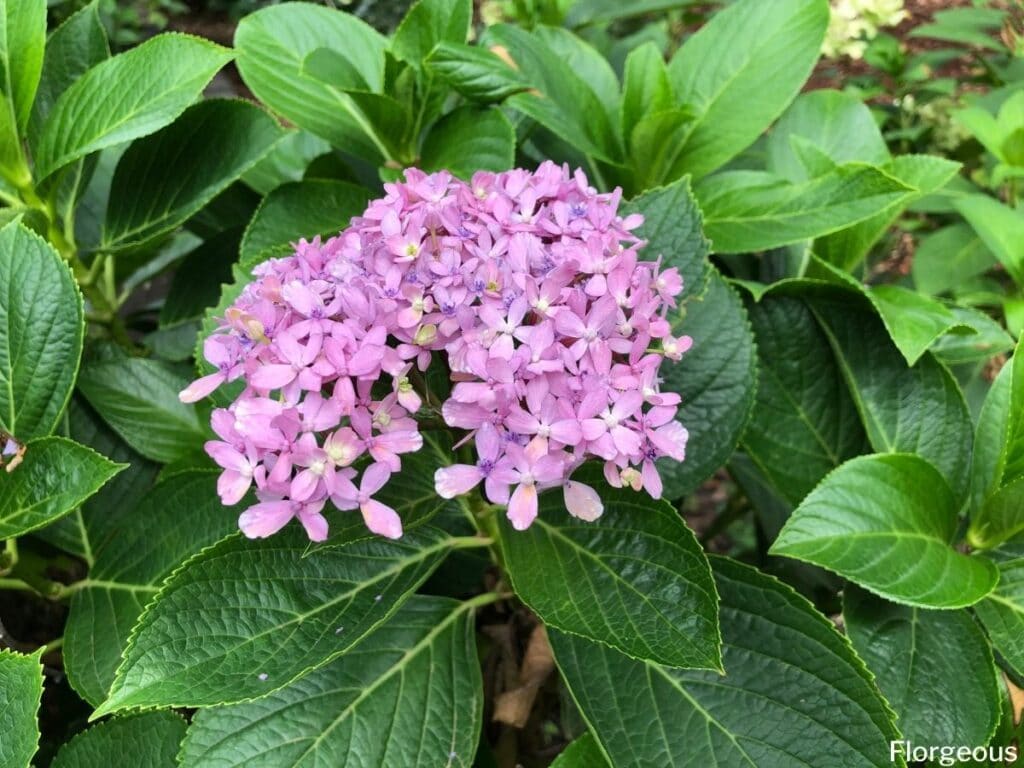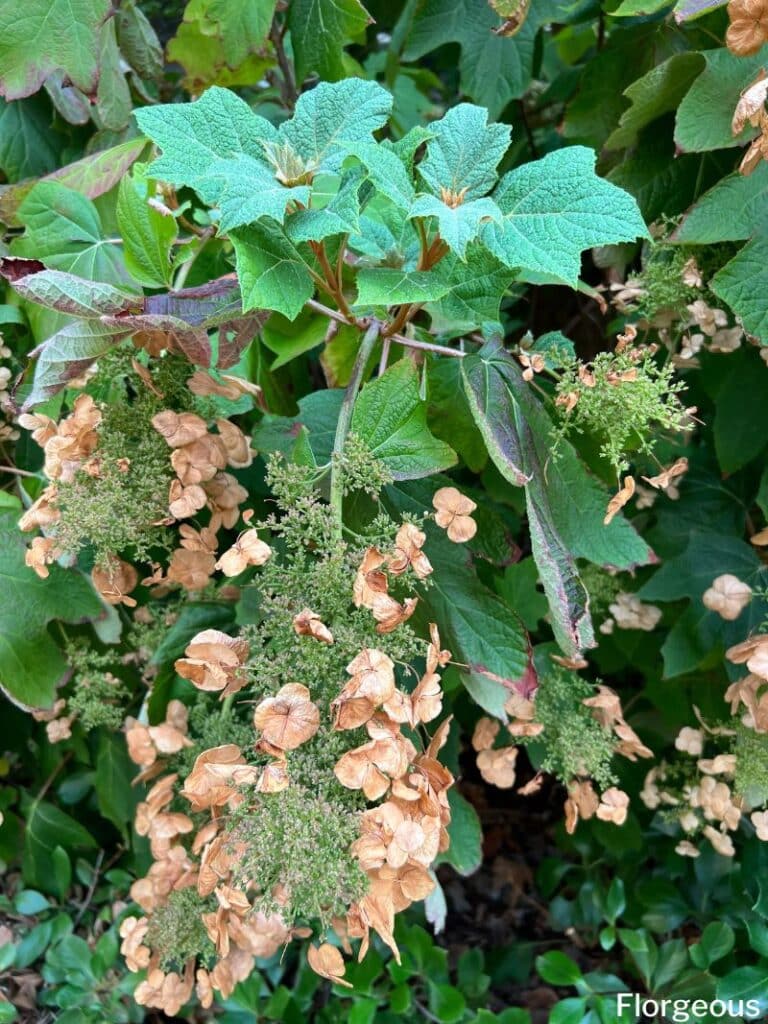If you’re interested in learning how to grow hydrangea plants (Hydrangea macrophylla) from seeds, you’re in the right place.
The truth is, there are plenty of different ways you can cultivate a gorgeous landscape – but growing hydrangeas is undoubtedly one of the best. There are countless species of hydrangeas you can grow in the landscape, but all share similar cultural requirements.
These gorgeous flowering shrubs can be used in all kinds of design schemes. Whether you’re interested in pink flowers or blue flowers, panicle hydrangeas, smooth hydrangeas, or oakleaf hydrangeas, growing hydrangeas from seed is easier than you might think.
Whether you’re growing hydrangea in a shrub border, in a mixed planting with other perennials, or even as a single specimen planting, this plant will provide beauty and colorful interest all summer and well into the fall.
Here’s how to plant hydrangea seeds so that you can start your own garden of these gorgeous shrubs to your heart’s content.
What is the Best Way to Grow Hydrangea?

Hydrangeas can be grown in several ways.
Growing Hydrangea Plants From Transplants
You can purchase a starter transplant at your local nursery – arguably, the easiest way to grow this kind of plant since all the early work will have been done for you. All you need to do is plant the shrub into your garden, water, and watch it grow! Check our guide to learn how to plant hydrangeas.
Starting With Hydrangea Seeds or Cuttings
If you want to grow multiple shrubs, buying transplants can get expensive in a hurry. That’s why many gardeners prefer to propagate their own hydrangea plants, either by cutting or by planting from seed.
Stem cuttings allow you to grow hydrangeas more quickly but it can be difficult, in some cases, to get a plant to root.
Starting from seed takes longer, especially when you consider these seeds can be quite tiny, but it’s worth the extra effort when you consider the money you will save and how much variety you can encourage in your garden.

How to Grow Hydrangeas from Seeds
If you’re an advanced gardener that’s up for the challenge, growing hydrangeas from seed is a great way to fill your garden with color. With hydrangeas, any new plant that is grown from seed is considered a brand new cultivar – something for you to really hang your hat on!
Growing hydrangeas from seed can be a time-consuming method to propagate hydrangeas, but trust us when we say it’s worth it! You’ll be looking at gorgeous hydrangea shrubs in your backyard in no time.
Here are some tips to help you do it successfully.
1. Collect Hydrangea Seeds
If you want to start a plant from seed, collect the original parent hydrangea seeds in the fall, ideally when the seedpods have dried up and are just starting to open. The seeds will be brown and dust-like in their consistency.
Hydrangeas produce seeds through their massive fertile flowers but while the flowers are large, the seeds are not. You will need to wait up to 12 weeks after blooming for the hydrangea blossom to fade and dry. You won’t have fertile flowers until then – just sterile ones.
If you plan on planting hydrangea seeds, it requires this fertility, so be patient!
You can capture these hydrangea seeds by placing a plastic bag over the dried flower head. Cut the head from the plant, then tip it upside down and shake out the hydrangea seeds.

2. Store the Hydrangea Seeds
This is where you really need to exercise some patience! You won’t be able to do anything with your seeds until spring. Store them in the refrigerator inside a plastic bag until spring. A brown paper bag will also work.
3. Start Your Seeds
About six to eight weeks before the last expected frost, you can plant your hydrangea seeds. Sprinkle the seeds onto moist, fertile potting soil. Do not cover them with the potting soil. The hydrangea seedlings need light to germinate.
Keep the soil moist after your initial surface sow. Adequate soil moisture is essential for the germination process!
4. Care for the Hydrangea Seeds
While you are waiting for the seeds to germinate – germinating hydrangea seeds can take up to four weeks – all you need to do is mist the soil occasionally with a bit of warm water. Keep the container in bright, indirect sunlight and wait for growth to appear.
5. Transplant the Shrubs
Once your seedlings are mature, with at least two sets of real leaves, you can transplant them outdoors. This is when your plant will develop roots and is safe to transplant outside.
Both spring and fall are generally considered ideal times for transplanting hydrangeas, but the smaller your seedlings are, the more recommended it is to plant in the spring. This can reduce the likelihood of winterkill.
At the same time, avoid transplanting in the heat of summer, which can kill your plant.
To transplant, dig a hole that is about twice the size and depth of your seedling’s root ball. You should plant in a location that recipes a bit of afternoon shade.
Gently place your seedling’s roots in the ground. Fill with soil around it, then thoroughly soak the planting area. Mulch around your seedling to help the soil conserve moisture and suppress weeds.
While your plant is getting established during the first growing season, you may want to water once or twice a week. After it’s set strong roots (in the second year and beyond), you likely won’t need to water unless conditions are extremely dry.
How Long Does it Take for a Hydrangea to Grow to Full Size?

Although it requires some time to get a hydrangea started from seed, the good news is that your hard work will eventually pay off!
Most hydrangeas grow quickly, with some varieties putting on more than 25 inches of growth in the first year alone! Because of that, you should find that your hydrangea is at its full size within just a few years.
Of course, providing your hydrangea plants with the ideal conditions for their growth will help it produce much healthier, lush-looking growth for you to enjoy for many years to come. Give your plant exactly what it needs and it will reward you with beautiful blooms for years!







